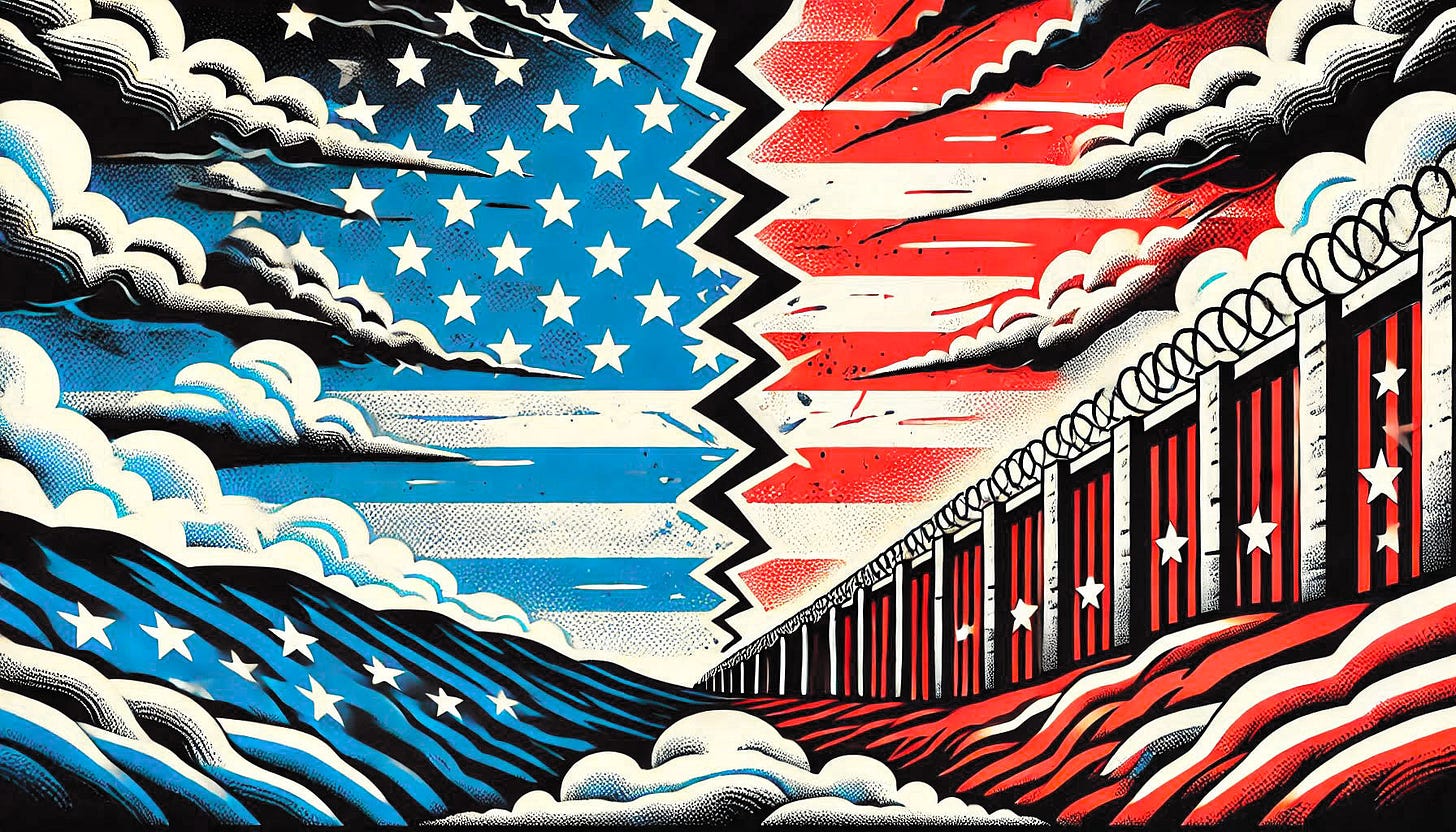Want to make a difference? Share this article with your network and start conversations about how we can bridge these divides together.
In a nation once envisioned as a beacon of democracy, deepening divisions rooted in racial and political strife now threaten its core ideals.
From the civil rights movement to today’s charged debates over critical race theory, racial and political warfare has carved a widening gulf among Americans.
This article explores how these divisions evolved, their real-world impact, and why addressing them is critical to America’s survival as a united democracy.
The Historical Roots of Division
The history of racial and political division in the U.S. stretches back decades. While the civil rights era promised progress, it also catalyzed the Southern Strategy of the 1960s—a calculated effort by politicians to exploit racial tensions for political gain.
This era laid the groundwork for systemic issues that persist today.
Key Historical Factors
Southern Strategy: In the 1960s, the Republican Party sought to win over Southern white voters by appealing to racial anxieties about civil rights.
This strategy used coded language about “law and order” to suggest that civil rights advances endangered traditional American values.The War on Drugs: Launched in the 1980s, this campaign disproportionately targeted Black and Latino communities, exacerbating racial disparities in incarceration and public perception.
According to the ACLU, Black Americans are nearly four times more likely to be arrested for marijuana possession than white Americans, despite similar usage rates.
These historical factors created a legacy of systemic racism that continues to shape racial and political dynamics in modern America.
Related 5-Part Series: The Southern Strategy 2.0 Revealed
The Modern Landscape of Racial Warfare
Today, racial tensions have taken on new forms but remain deeply entrenched. Events such as the Charlottesville rally in 2017 and the murder of George Floyd in 2020 sparked nationwide protests, revealing a cultural war over identity, justice, and power.
Recent movements like Black Lives Matter (BLM) have intensified debates on systemic racism, police brutality, and racial inequality.
Police Brutality and Systemic Racism
Floyd’s Death & BLM: The murder of George Floyd was a flashpoint, triggering protests worldwide and igniting debates about police violence against Black communities.
Despite broad support for the movement, there has also been significant backlash, with opponents framing it as a threat to public safety and order.Voter Suppression: Modern voter suppression tactics, such as strict voter ID laws and gerrymandering, often target communities of color.
The Brennan Center for Justice notes that recent state laws restricting voting access disproportionately affect Black and Latino voters, fueling political division.
The persistent racial divide reflects not just cultural tensions but also economic disparities, healthcare access issues, and other systemic inequities.
The Political Exploitation of Division
Political figures and parties have consistently leveraged racial tensions to galvanize voter bases.
This strategy is not exclusive to one party; however, recent years have seen an increase in incendiary rhetoric and policy proposals that deepen racial and political divides.
Examples of Political Manipulation
Trump’s Rhetoric on Immigration: During his presidency, Donald Trump repeatedly characterized immigrants as criminals, emphasizing themes of fear and division.
This rhetoric culminated in policies like the “Muslim Ban” and family separations at the border, both of which faced widespread criticism for their discriminatory impacts.Critical Race Theory (CRT) Debates: The Republican Party has made CRT a central campaign issue in recent elections, claiming that teaching about systemic racism in schools is divisive.
This has become a rallying cry for conservative voters, resulting in laws banning CRT in public schools across multiple states.
Such political tactics not only galvanize voters but also deepen mistrust and polarization among Americans.
Concerned about America's future? Now is the time to get involved.
Support organizations that promote voting rights, donate to racial justice initiatives, and educate yourself on systemic issues. Your voice can help bridge these divides—don’t stay silent.
Real-World Consequences of Division
The cost of racial and political warfare extends beyond political polarization—it impacts everyday lives.
Increased hate crimes, healthcare disparities, and economic inequality are just some of the tangible effects of this deepening division.
Examples of Consequences
Rising Hate Crimes: The FBI has reported a steady increase in hate crimes over the past few years, with Black and Asian communities facing particularly high risks.
The Center for the Study of Hate and Extremism notes a 339% increase in anti-Asian hate crimes in 2021 alone.Healthcare Disparities: The COVID-19 pandemic highlighted severe disparities in healthcare access for communities of color.
Black and Latino populations suffered higher rates of infection and death due to long-standing inequalities in healthcare access and economic opportunities.
These consequences highlight the urgent need for solutions that address not just the symptoms but the root causes of societal division.
Solutions and the Path Forward
Addressing America’s deepening divides requires a concerted effort from all sectors of society—government, private sector, and grassroots organizations.
Promising Solutions
Policy Reforms: Comprehensive reforms that address voter suppression, police accountability, and economic inequality are essential.
Initiatives like the John Lewis Voting Rights Act aim to protect voting rights for marginalized communities.Community-Based Efforts: Local initiatives focused on reconciliation and dialogue, such as restorative justice programs, can help heal divisions at the grassroots level.
Successful models exist in cities like Newark, where community policing has reduced crime rates and improved police-community relations.
Conclusion
The United States faces an existential challenge: overcoming racial and political warfare that threatens its democratic fabric.
While the path forward is fraught with obstacles, meaningful engagement and action can bridge these divides.
It is a critical time to move from division to unity, ensuring that the true promise of American democracy is realized for all.



